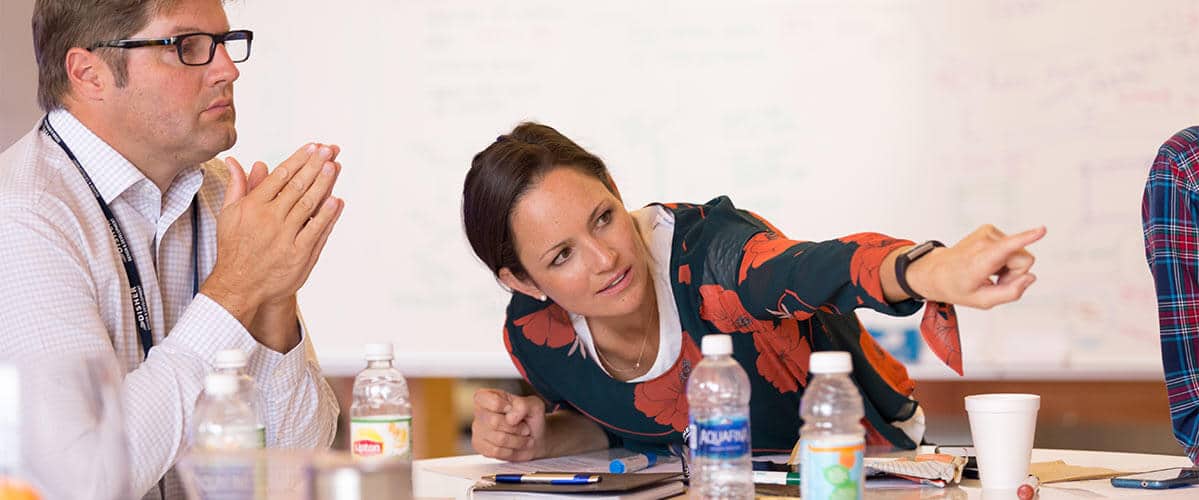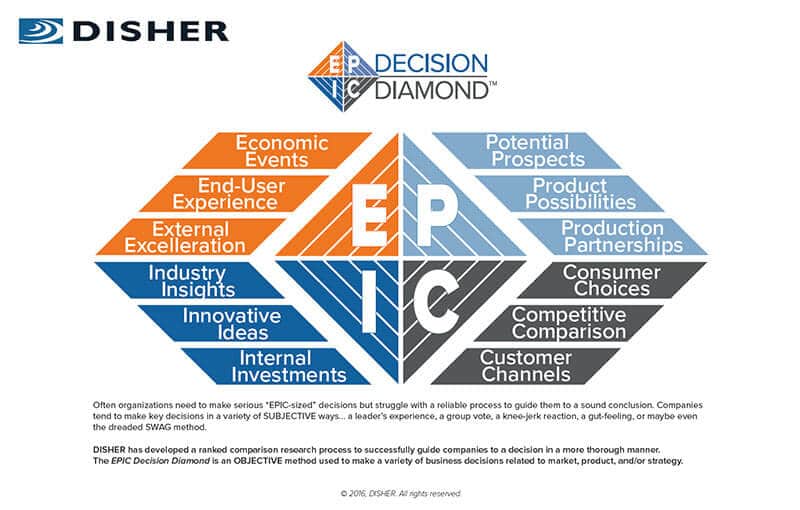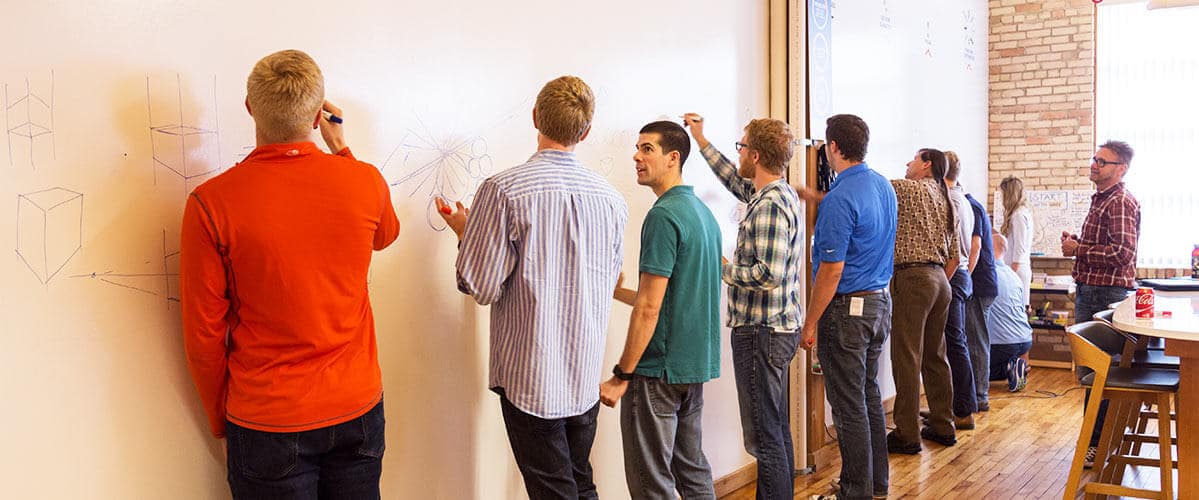4 Keys to Accelerate Your Speed to Market
March 6, 2018

Written By:
Kristin Zietlow | Product Development Engineer

“Only the paranoid survive,” he spoke softly while everyone listened intently. Jerry was known in the company for pulling off miracle product launches and releasing game-changing products. While nervous laughter made its way around the room, Jerry’s face remained serious. He used the quote, originally said by Andy Grove of Intel, as a starting point to propose that speed to market and acting as if the competition was right on your heels was the best and only way to develop new products. As an engineer fresh out of college, this talk influenced the next 15 years I spent in R&D.
Speed to market, or the art of transforming an idea into a product faster than anyone else, is an essential skill for new product development.
However, it goes beyond that. You can apply this principle to starting a new business, making a small change individually or as an organization, or tackling some of your biggest life goals. Once you understand the significance of speed to market and implement some practical tactics, you will be far ahead of where you and your competitors thought possible.
Over the course of my career as an engineer, I have seen the speed-to-market mindset gain momentum and relevance due to three main trends:
+ The speed of innovation in today’s world is incredible. Open source technology has allowed technologies to build on each other like never before. Recently, I was part of an electrical device prototype project. We used a pre-built electrical board Raspberry Pi as a starting point. This alone saved us months of work as did using our 3D printers to create proof-of-concept parts. Over the span of the eight-month project, new software releases for the RPi were rolled out and a new version of Bluetooth was released.
+ The accessibility to technology and funding for individuals to develop new products through platforms like Kickstarter and Start Garden means anyone can be your competition. It is worth watching the TED talk called “The Era of Open Innovation” by Charles Leadbeater for an in-depth look at what he calls “creative collaboration”.
+ Consumers have been conditioned for instant gratification by companies like Amazon. We now believe that anything longer than 2-day shipping is ridiculous. Speed is king in today’s world.
Before you put on your metaphorical running shoes, let’s ask ourselves: Is faster always better? Of course not. Some use speed to market as an excuse to cut corners. This can result in the wrong product being developed or a low-quality product failing in the market. Another risk of being too quick is the potential to burn-out your team.
However, this does not mean that slower is safer. Investing more time can be dangerous. We can be falsely comforted by the sheer amount of time we’ve invested in it. And when urgency is replaced by complacency in your team— be ready for failure. More development time does not always equal a better product. Speed to market means developing a product with a sense of urgency, while still maintaining high-quality standards in design practices.
4 Keys to Accelerate Your Speed to Market
1. FOCUS
Speed does not equal velocity. The difference? Speed measures how fast you are going (i.e. 70 mph); velocity is speed in a defined direction (i.e. 70 mph south). The nerd in me thinks that “velocity to market” would be a better phrase than “speed to market”. You can develop products with speed, but if the focus is not right— you may be quickly heading in the wrong direction.
+ Start with a well-defined vision. This is more than just a plan or project schedule. At DISHER, we sometimes use our Whiteboard Workshop sessions to map out the vision of the product and project. Define what the product is, and what it is not. Ask questions like, “What problem am I solving for? Why will this matter? How is it a game-changer?”
+ Just say no. Do not get distracted by features or ideas not directly linked to the essence of the product. Trying to pack too many things in could be the death of your concept.
+ Follow an organized strategy for market research. We use a process called EPIC (See Figure A) that helps us customize and organize the key market research for a product and draw valuable conclusions that influence the design concepts.
+ Keep your focus for the duration of the project. For longer projects, ensure there are still weekly or palatable milestones for your team to hit. Urgency breeds focus. Those mini-milestones not only maintain direction but provide a booster for your team when the goals are hit.
2. AGILITY
Our society is quite accustomed to Google Maps. If we want, we can literally see every part of the journey before we begin. However, the beauty and burden of new product development is that you cannot possibly plan for every scenario you will encounter. Agile project management is when every member of the team can recognize and react appropriately to a new variable or risk. If focus is velocity, then agility is acceleration– being able to change the speed or direction of a project.
+ Embrace and expect change, both at a project and an organizational level.
+ Carefully calibrate your resources and do not be afraid to ramp your team up or down as often as necessary.
+ Communicate well and often. Extraordinary communication must go hand-in-hand with running a flexible project. Scope changes, schedule changes, and budget changes must be proactively decided on and communicated. One tool we’ve developed at DISHER for this is our budget tracker, (See Figure B). Though it may appear time-consuming, the budget tracker updates only require five to ten minutes to do.
+ Organize the project schedule around top risks and the biggest questions about the product. Then map out the most efficient way to get answers. An interesting method associated with this is to release a minimum viable product. In his book, Lean Start-up, Eric Reis believes getting an early version product to the market is the only way to truly answer the question, “Will people buy it?” Below is the Build-Measure-Learn feedback loop fundamental to this approach.
+ Encourage cross-pollination. We use “Ask DISHER”, an email-based inquiry system to DISHER employees with various industry and functional backgrounds, to provide insight for a question someone has on a project. Choose participants for brainstorm sessions with a diverse set of experiences and skills. Consider a mix of experienced and new engineers, which often has productive results that could lead the design in a different direction than expected.
3. MOTIVATION
When you interview someone for a position, look for a person that is both energized and energizing. In the same way, your culture should be energized and energizing. DISHER offers complimentary culture tours which provide an inside look as to the why, way, what, and who of culture. A high-performing culture begins and ends with people.
+ Hire motivated individuals. When you ask a candidate why he or she wants to work at your company, do you get a canned or genuine answer? Did he or she prepare well for the interview? Will they be a good culture fit? Beware of superficial excitement. Make sure they back up what they say with examples of follow-though. As Angela Duckworth states in her book Grit, the Power of Passion and Perseverance, “Enthusiasm is common. Endurance is rare.”
+ Understand that finishing is harder than you think and will take more effort than estimated. It is difficult to maintain the energy you have at the beginning of a project. Plan for this by building additional time into your schedule proportional to the level of project risk. Use the mini-milestones technique to encourage small victories along the way.
+ Adopt the mindset that you are working for your team when you are managing a project. Your job is to make sure they have all the tools and answers they need to knock out their work. Organizing and prioritizing things with them is beneficial if you do it collaboratively. A sure way to demotivate people is unclear direction and expectations.
+ Paint a clear vision of the project and product at the beginning and repeat these goals often.
+ Be visual. At DISHER, we have movable whiteboards that are rolled around the project areas and sometimes used to track projects. They can be used to: fill a timeline or thermometer chart for progress, create a weekly to-do list, flag items for urgency, and capture open issues and top risks as they evolve. The most powerful impact of this approach is the reduction in emails, documents, and required updates to others. The board is updated during a brief team stand-up, so everything is created, reviewed, and responded to immediately. The vision and tracking of the project is obvious to managers or others interested in the progress.
4) EFFICIENCY
One of the biggest tragedies in new product development is poor implementation of business processes. In addition to eating up valuable time, an over-reaching, controlling process can sap the motivation from anyone that uses it. We have all seen it. The coworker with a fire in his eyes that he has finally cracked the code on how things should be done. He goes on a crusade to implement his perfect process that solves everything. The problem with most overbuilt processes is that they are like suits: one size does not fit all.
+ Keep it simple. A process or software solution should be just enough to meet the core needs and not anything more. People are drawn to different organizational methods, thought processes, and collaborative styles. Do not make everyone wear the same suit.
+ Do it for the right reasons. Be convinced of the “Why” of a process before you focus on the “What”. Are you putting in processes or checkpoints because you do not trust the people or their work? Is the process necessary to improve productivity, or is it just catering to your personal style? Automating workflows through programs like SharePoint should speed things up, not just control things.
+ Consider the effect of the process on all end users. Maybe it is speeding things up for two people but slowing things down for thirty. Processes should have the goal of making the business run more efficiently for everyone.
+ Make timely decisions. This is an ordinary task that can have the extraordinary result of greatly motivating the team. In many development processes, a step called a “Phase Gate” is when the key stakeholders decide if the project will continue. Many times, the decision is hung up on a few minor things that need to be wrapped up. Consider an “Approve with follow-up” arrangement. This allows the project to move on to the next phase while maintaining both momentum and motivation for the team.
If you watched the Olympics, reflect on the four keys to increasing your speed to market: focus, agility, motivation, and efficiency. Remarkably, these are also good words to describe a competitive athlete. My soccer coach in high school used to say, “First to the ball.” In other words, do not wait for the ball to come to you. Run and get it before someone else gets there. When it comes to new product development, we are all on a playing field. Except this field is covered in fog. No one knows who else is out there, and it’s not clear how big the field is. Yes, this may sound a bit paranoid… but anyone could just jump out of the fog and steal your ball.
Jerry’s talk from over 15 years ago not only resonates but is amplified in today’s environment. Work with a sense of urgency. Be first to the ball and first to the market to gain a competitive edge. A healthy sense of competition can bring your performance, focus, and ultimately success up to levels you did not think were possible.
If you need help updating an existing design or developing innovative ideas for the future, contact DISHER. We would love to help you succeed by increasing your speed to market.
Written By: Kristin Zietlow | Product Development Engineer
Kristin is a driven individual that can do technical design or project management. Her passion for organization and quality make her a key player in any project. She graduated from Calvin College with a BSE in Mechanical Engineering and holds training certifications for Solidworks and Pro-E.





